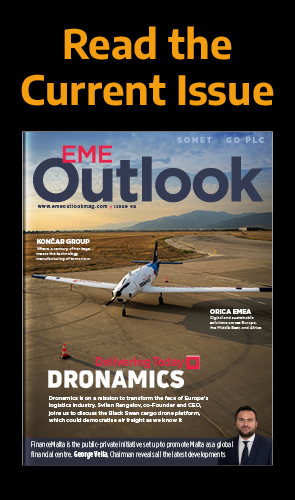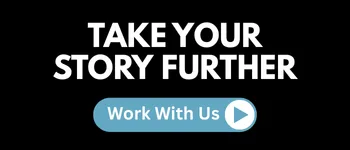- HUMAN RESOURCES WITH ANDY CAMPBELL, HCM CLOUD SALES EVANGELIST, ORACLE
- How can forward-looking HR professionals gain advantage using analytical tools?
- CUSTOMER EXPERIENCE WITH BRIAN CURRAN, VP, PRODUCT STRATEGY, ORACLE
- How does an organisation become the brand of choice?
- How can companies be successful by meeting customers’ needs?
HUMAN RESOURCES WITH ANDY CAMPBELL, HCM CLOUD SALES EVANGELIST, ORACLE
How can forward-looking HR professionals gain advantage using analytical tools?
Andy Campbell: The traditional business analysis tools available to most HR executives often limit their ability to shape company strategy, and provide little more than the ability to scrutinise backward looking efficiency metrics to gauge success. When one compares a business’ payroll costs to its overall expenses however, it becomes evident that its people are, as the saying goes, its most valuable assets. With this in mind, it becomes critical to provide HR directors with a set of comprehensive analytical tools that simplify the synthesis of relevant data and promote the realisation of valuable business intelligence.
The more complete a business’s data is, the more thorough its analytics will be. By embedding the availability of HR data into their workforce’s business processes, organisations can promote a steady flow of relevant information. This ultimately means that people have access to the right information when and where they need it, and can therefore perform their jobs more easily and more effectively. In addition, keeping the data channel open to employees even when they are mobile will ensure that this exchange remains active at all times. Therefore, an ideal HR analytics tool should also be pervasive, and allow businesses to share relevant information with their employees quickly and in high-quality, no matter what device they are viewing it on.
Given that the complexity of HR data increases as a business expands its offerings, a tool that quickly consolidates this data to help perform a holistic HR investigation becomes an indispensable analytics asset. When HR data is combined with additional company data, the operational divides that traditionally exist within a business are broken down. With the power to overcome this silo effect in a whole new way, companies can convert what were once discrete sets of static information into powerful business intelligence. For example, a retail store manager who collects HR information relating to employee income, and studies these in light of broader sales, profit, and customer footfall data, will gain unique insight into his or her staff’s performance that will in turn enable better workforce management.
The ability to anticipate changes in workforce behaviour and performance is extremely constructive, and gives businesses an unprecedented head-start in developing and retaining their top talent. Predictive HR analytics provide businesses with the insight they need to make more proactive personnel decisions. This enables HR executives to develop forward-thinking strategies aimed at ensuring that their present and future hires make the most positive long-term impact on their business.
CUSTOMER EXPERIENCE WITH BRIAN CURRAN, VP, PRODUCT STRATEGY, ORACLE
How does an organisation become the brand of choice?
Brian Curran (BC): The unifying thread between the brands consistently voted the world’s “best” is a high level of brand equity. These companies consistently strike a visceral and highly emotional chord with consumers.
To build exceptional brand equity, businesses must first establish what their brand stands for explicitly. Brand equity is built on emotion, and ultimately customers’ perceptions of a company will impact how it defines its brand image. As such, the extent to which businesses can gain insight into this sentiment determines in large part how well their brand is received.
To tap into customers’ emotions, businesses need to anticipate their needs and intentions and engage with them proactively based on their learnings.
For this approach to succeed, companies must ensure that every aspect of their business is geared towards delivering on their brand’s promises. To achieve this, they first need to fully map peoples’ customer journey, including how they inform themselves, how they interact with their products, and how their relationship with a brand evolves over time.
Customers today are motivated by two drivers: the desire for control and the desire for ease. People today expect 24/7 access to the brands they interact with, including immediate response via the social media channels that have become so central to peoples’ lives.
In addition, they expect all communications with a brand to be seamless and efficient, especially as the shopping experience now crosses multiple platforms – online, mobile, in store – in the course of one purchase.
The Role of Emotion in Brand Equity
The way that customers think about brands is essentially through a series of associations made up of feelings, sounds, images and understandings. Every one of these has an impact on how the brand is perceived, its equity and ultimately whether a purchase is made or not. As such, brand equity is built through eliciting positive emotional responses from customers; the goal of the business should be to shape brand associations so that positive associations come to mind easily and, in turn, predispose consumers to their brands.
If businesses can provide control and ease of engagement to customers then this emotional need is largely met. If customers are able to contact the brand however they want and get through immediately to have their needs met with minimal fuss boosts satisfaction and the brand’s equity increases accordingly.
How can companies be successful by meeting customers’ needs?
BC: Traditional means of boosting customer engagement are no longer enough, as people today have become more discerning than ever and have begun to impose their own terms on how the brand experience is delivered to them.
Businesses now need to connect with customers on an emotional level – a task that has become very difficult to achieve in today’s fast-shifting market.
Established companies have struggled with the scale of change required to adapt in-full, and have instead opted for a half-way house. As a result, many of them are failing to make the wholesale transformation required to prosper in today’s consumer-driven environment.
To overcome the limitations that legacy systems place on their evolution, businesses need to turn to the customer (CX) specialists in their company, and empower them by tapping into their “intrapreneurial” spirit.
To lighten the load, what’s required is nothing less than a fundamental change in how businesses think and work. The rule book needs to be torn up and organisations need to look afresh at what the customer journey looks like today – how customers engage with brands and how they fulfil their needs in a meaningful way. Based on what they find they then need to rebuild their entire organisation around the new customer-centric reality. In practice this requires something very special.
Intrapreneurs bring an entrepreneurial flair to the business. They are disruptors that take on the critical task of forcing-through much needed internal innovation by legacy burdened companies.
A major challenge for businesses today is to align their internal structure with how their brand is perceived by consumers. People do not see the silos – marketing, sales, service and so on – that have historically divided companies. What they see and interact with is one consistent brand and image.
Intrapreneurs realise every department across a business must come together for it to start considering strategy in simpler, more unified terms, and fulfil the needs of modern customers.
Put plainly, those businesses that still operate in siloes will fail. They will be supplanted by organisations that are tightly-woven, with processes and methodologies specifically designed to get the organisation working as one to deliver the very best customer experiences. The key for organisations now is to ensure they have the right intrapreneurial talent in place to help instigate and drive this disruptive transformation before legacy-free competitors win the race for market share. For customer experience professionals the onus is on them to grab the challenge by the horns and see what they can do to change how their business understands and engages with its customers. They must transform themselves into intrapreneurs before they can transform the company.


































